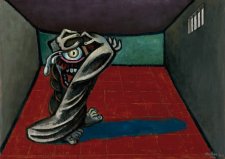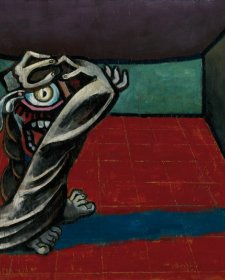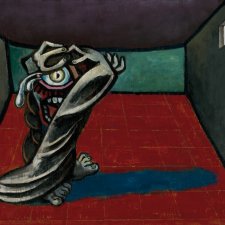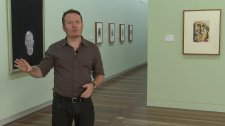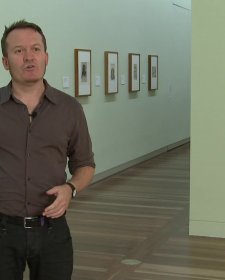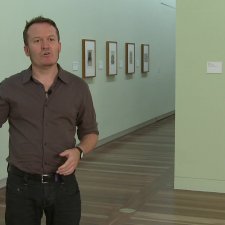The question of why I paint is always pretty ambiguous. I think it’s answering an inner compulsion, because if I didn’t find this particular form of activity – to me it’s one that is defining things to myself and defining myself – I’m not quite sure what would happen to me if I didn’t answer this kind of inner compulsion. And I suppose it relates to one’s attitude to life. I think that, despite all the negative and destructive powers that are constantly at work with us, that one is constantly striving to affirm life, to be in love with it, and these are the tokens of affection on our way, as it were.
The question of why I paint the particular things I do is also pretty ambiguous. I think I would say that I’m trying to exorcise my own particular devils, and I suppose some of them get into the painting. I hope they do, that’s where I’m trying to put them, and get rid of them.
But once out, of course, one can then feel this kind of relaxation, the affirmation flows in, and the devils in the painting can sometimes turn into angels.
I suppose in the act of work that it is essentially a struggle to escape the enmeshment of one’s ego, and in the attempt to struggle free one seems externally, to the external world, to be a very egocentric person, because you’re following a necessary compulsion without which one loses one’s own balance and direction in life; and in the act of working one is defining these shapes, ejecting them as it were, and getting rid of them; and this process of ejectment is one there which is defining and clarifying one’s own particular kind of energy which you are attempting to flow out into life.
